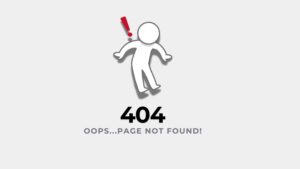Digital marketing is a landscape of perpetual change, where strategies must evolve to keep pace with emerging trends and consumer expectations. As such, recognizing and addressing these signs is essential to ensure your marketing efforts are not only current but also impactful and aligned with your business goals. Here, we identify the critical signs that your digital marketing strategy may be lagging behind and need a strategic overhaul.
![]()
1. Declining Engagement Metrics
Engagement metrics are the pulse of your digital marketing health, providing real-time feedback on how well your content resonates with your audience. When these metrics start to decline, it’s a clear indicator that your strategies need a thorough reassessment and, possibly, a strategic pivot to realign with your audience’s evolving preferences.
Decrease in Social Media Interactions
Social media platforms are dynamic arenas for customer engagement, constantly evolving with user preferences and trends. A noticeable and consistent decline in likes, shares, and comments signals the need for a strategy reassessment. Consider a scenario where a fashion brand notices a significant drop in engagement on its Instagram posts.
The first step is to analyze whether the content aligns with the latest fashion trends or if it resonates with the target demographic, particularly the younger audience, who are the primary users of the platform. In this case, it might be necessary to revitalize the content strategy — perhaps by incorporating more video content like reels or stories or engaging with users through Instagram polls and Q&A sessions.
Exploring emerging platforms popular with the target demographic, such as TikTok, could also reinvigorate engagement. Implementing these changes is part of an adaptive social media marketing strategy, essential for staying relevant in a rapidly changing digital landscape.
Additionally, closely observing competitors’ social media strategies and understanding emerging trends in the fashion industry can provide critical insights for reshaping your approach. This proactive response to declining social media interactions is crucial in maintaining a solid connection with your audience and ensuring your social media presence remains effective and engaging.
Reduced Email Open and Click-Through Rates
Email marketing remains a powerful tool for direct communication with your audience, but declining open and click-through rates indicate a gap between your message and your audience’s interests. This scenario calls for an analysis of your email content and delivery strategy. Are your subject lines compelling enough to prompt opens? Is your content personalized and relevant to your audience’s needs?
Testing different subject lines, personalizing email content, segmenting your audience, and optimizing send times can significantly enhance the effectiveness of your email campaigns. Additionally, integrating clear and compelling calls-to-action can improve click-through rates by guiding readers towards desired actions.
2. Inadequate Online Traffic and Conversion Performance
When online traffic and conversion flow start to ebb, it’s a significant red flag for any digital marketing strategy. This decline is often a symptom of deeper issues in SEO and PPC strategies or the overall effectiveness of your website’s conversion funnel. Addressing these concerns promptly can help recapture lost traffic and improve conversion performance, which are crucial for the health and growth of your online presence.
Drop in Organic Search Traffic and PPC Effectiveness
The decrease in organic search traffic and PPC effectiveness is a critical concern, signaling that your current strategies might not be in sync with search engine algorithms or user search behaviors. To tackle this, consider the following actions:
- Reevaluate Keyword Strategies: Ensure your SEO and PPC campaigns target the most relevant and high-performing keywords. Regularly update your keyword research to adapt to changing search trends.
- Optimize Ad Copy and Landing Pages: Review and refine your PPC ad copy and landing pages. They should be compelling, relevant, and aligned with your target audience’s needs.
- Improve SEO Tactics: Audit your website for SEO best practices, focusing on on-page optimization, quality backlink acquisition, and content relevance.
- Leverage Analytics: Use analytics tools to understand the source of traffic drops. Analyze user behavior and campaign performance to identify areas for improvement.
By systematically addressing these areas, you can rebuild your organic and paid search traffic. Remember, the goal is not just to drive traffic — but to attract the right traffic that is more likely to convert.
Low Conversion Rates and Ineffective CRO
If your website attracts visitors but fails to convert them into customers or leads, it indicates ineffective Conversion Rate Optimization (CRO). Here’s how to address it:
- User Experience Audit: Conduct a thorough review of your website’s user experience. Identify any friction points in the navigation, content layout, and call-to-action placements.
- A/B Testing: Implement A/B testing for different elements of your website. Test design, content, and CTA variations to determine what resonates best with your audience.
- Analytics Review: Use analytics to understand where visitors drop off in the conversion funnel. This insight will help in pinpointing specific areas that need improvement.
Optimizing for conversion requires a deep understanding of your audience’s needs and behaviors. By continually testing and refining your website based on data-driven insights, you can enhance the user experience and increase the likelihood of conversion.
3. Ineffective Use of Data and Analytics
Navigating the complex digital marketing landscape without data and analytics is akin to sailing without a map. Data-driven decision-making and a keen awareness of market trends are not just advantageous; they are essential for crafting strategies that resonate with your audience and deliver measurable results. Let’s explore how the absence of these elements can derail your marketing efforts and how their effective use can significantly enhance your strategy.
Lack of Data-Driven Decision Making
Failing to base decisions on data is a missed opportunity in optimizing your digital marketing strategy. For example, a company might continue to invest heavily in a particular social media platform without analyzing user engagement data, only to find that their target audience has shifted to a different platform. This misalignment results in wasted resources and diminished returns.
Implementing a data-driven approach involves regularly collecting and analyzing data from various sources, such as website analytics, social media insights, and customer feedback. This data should inform every aspect of your strategy, from content creation to campaign targeting, ensuring that your efforts are well-directed and continually refined based on real-world performance.
Ignoring Customer Feedback and Market Trends
Disregarding customer feedback and market trends is a critical oversight in digital marketing. For example, a company overlooks emerging customer preferences for sustainable and eco-friendly products. By not aligning its marketing messages and product offerings with these trends, the company risks appearing out of touch and losing relevance to a significant segment of its market.
Staying attuned to customer feedback and market trends involves actively seeking and analyzing customer opinions through surveys, social media listening, and market research. It also means being adaptable and ready to pivot your strategy in response to new consumer behaviors and preferences.

4. Poor ROI and Marketing Efficiency
The core objective of any marketing strategy is to generate a strong return on investment (ROI) while maintaining cost efficiency. When these metrics start to falter, it indicates underlying issues in the marketing approach that need immediate attention.
A high customer acquisition cost and low return on marketing investments mean your strategy requires meticulous review and recalibration. Let’s delve into these areas to understand the reasons behind these challenges and the strategic actions needed to address them.
High Customer Acquisition Cost
An uptick in customer acquisition cost is a telltale sign of inefficiencies in your marketing strategy. This increase often points to spending in areas that do not yield proportional returns. To tackle this issue, consider the following steps:
- Evaluate Advertising Channels: Assess which channels are most cost-effective. Sometimes, less expensive platforms can yield better results.
- Optimize Ad Targeting: Refine your target audience parameters to ensure your ads reach the most relevant prospects, reducing wastage of resources.
- Enhance Conversion Funnel: Improve your conversion funnel’s efficiency, ensuring each step is optimized to guide prospects toward a purchase.
- Content and Offer Optimization: Tailor your content and offers to resonate more closely with your target audience, increasing the likelihood of conversion.
- Leverage Retargeting Strategies: Implement retargeting campaigns to re-engage visitors who have shown interest but haven’t converted yet.
After implementing these steps, it’s crucial to continuously monitor your strategies’ performance. Regularly reviewing these metrics will help you balance acquisition costs and the quality of leads or customers acquired, ensuring a more efficient marketing spend.
Low Return on Marketing Investments
A diminishing ROI on marketing investments signals a misalignment between your marketing strategies and business objectives. This scenario calls for a comprehensive audit of your marketing channels and tactics to identify areas where investments are not yielding the expected returns.
For instance, a significant investment in a social media campaign that doesn’t translate to increased sales or leads might indicate a need to reevaluate the platform or content strategy. The goal is to realign your marketing efforts with channels and strategies that demonstrate a higher ROI, ensuring that each marketing dollar spent contributes to your business growth.
Maintaining a keen eye on ROI and marketing efficiency is crucial for the sustainability and success of your marketing efforts. By focusing on these critical areas and continuously optimizing your strategies, you can ensure that your marketing investments yield the desired results and drive your business forward.
5. Outdated Digital Presence and Messaging
Maintaining a current and engaging digital presence is fundamental in today’s digital-first world. This goes beyond merely having an online footprint; it ensures that your website design and user experience (UX) are modern and user-friendly and that your brand messaging is clear and consistent. An outdated website or muddled brand messaging can significantly undermine your marketing efforts, deterring potential customers and weakening your brand’s online impact.
Stale Website Design and User Experience
An outdated website design and poor UX can swiftly turn visitors away, damaging your brand’s reputation and conversion rates. Here are examples of stale website design and user experience that need attention:
- Non-Responsive Design: A site that does not adapt to mobile and tablet screens creates a frustrating experience for users on these devices.
- Cluttered Layout: Overloaded with text, images, or too many colors, a cluttered layout confuses visitors and detracts from important content.
- Obsolete Visuals: Outdated graphics, fonts, and color schemes can make your website appear neglected.
- Slow Load Times: Pages that take too long to load often result in high bounce rates.
- Difficult Navigation: If users struggle to find what they need due to poor navigation, they will likely leave the site.
- Limited Accessibility: Websites not optimized for accessibility exclude many potential users.
- Generic Stock Images: Over-reliance on stock photos can make your site feel impersonal and unoriginal.
To counteract these issues, it’s crucial to undertake a comprehensive redesign, focusing on creating a clean, accessible, and responsive web design with an intuitive layout. Incorporating modern design elements, optimizing load times, and providing a personalized user experience can significantly improve engagement and conversions.
Inconsistent or Unclear Brand Messaging
Inconsistent or unclear brand messaging across your digital platforms can confuse your audience and dilute your brand identity. Ensuring a coherent and updated brand message is fundamental for solid brand recognition and connection with your audience.
When your website, social media, and other digital content send mixed messages about who you are and what you offer, it dilutes the impact of your brand. Ensuring consistency in tone, style, and messaging across all platforms strengthens your brand identity and fosters a stronger connection with your audience.
Proven Digital Marketing Strategies
Recognizing that your digital marketing strategy needs a revamp is the first step toward ensuring your brand’s continued online relevance and success. From revitalizing your social media approach to optimizing ROI, every aspect of your strategy deserves attention. Ready to elevate your digital marketing?
At The Ad Firm, we blend creativity with analytics to revamp your digital marketing strategy effectively. Contact us for a FREE estimate today!!!









